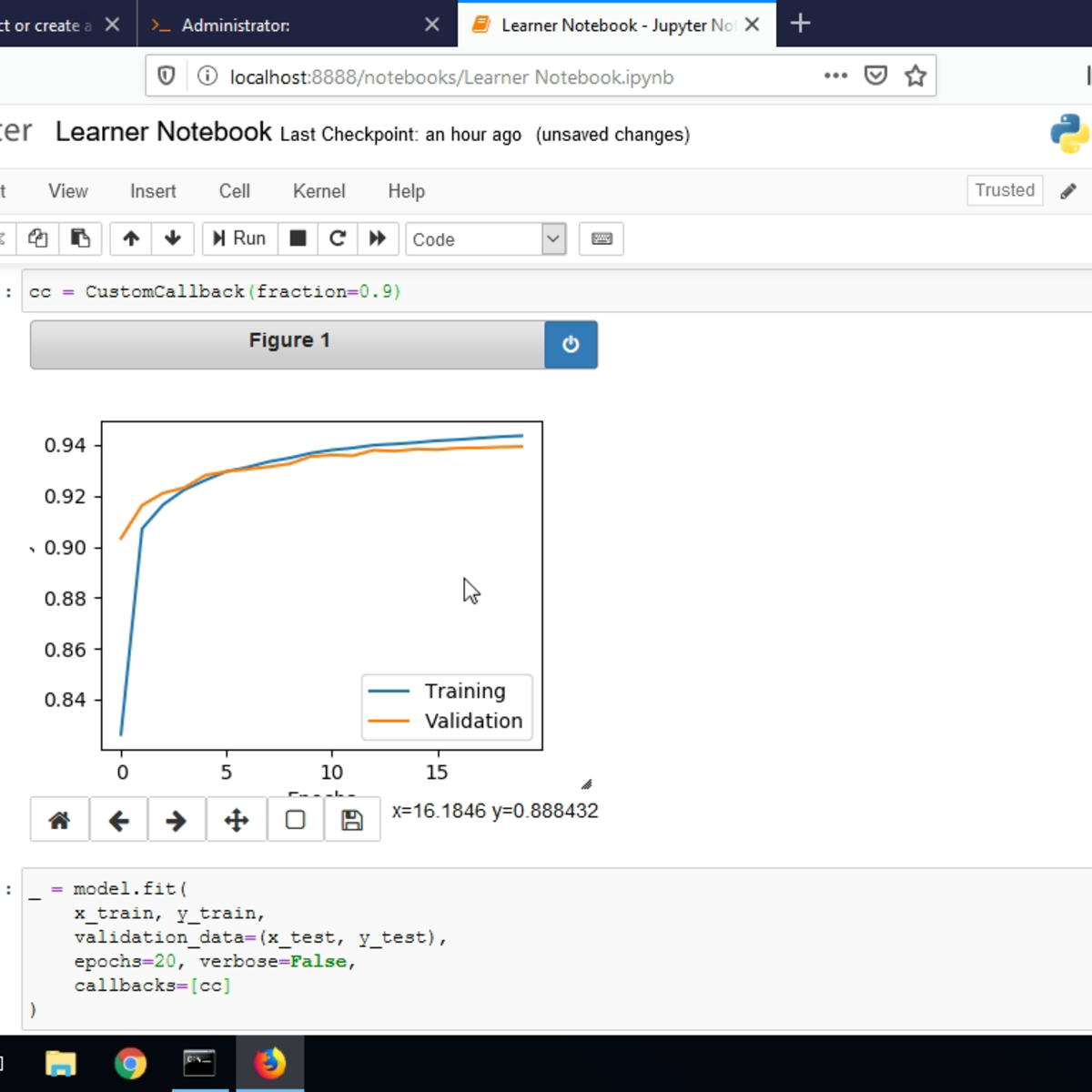
In this 1.5-hour long project-based course, you will learn to create a custom callback function in Keras and use the callback during a model training process. We will implement the callback function to perform three tasks: Write a log file during the training process, plot the training metrics in a graph during the training process, and reduce the learning rate during the training with each epoch.
Read more
In this 1.5-hour long project-based course, you will learn to create a custom callback function in Keras and use the callback during a model training process. We will implement the callback function to perform three tasks: Write a log file during the training process, plot the training metrics in a graph during the training process, and reduce the learning rate during the training with each epoch.
In this 1.5-hour long project-based course, you will learn to create a custom callback function in Keras and use the callback during a model training process. We will implement the callback function to perform three tasks: Write a log file during the training process, plot the training metrics in a graph during the training process, and reduce the learning rate during the training with each epoch.
This course runs on Coursera's hands-on project platform called Rhyme. On Rhyme, you do projects in a hands-on manner in your browser. You will get instant access to pre-configured cloud desktops containing all of the software and data you need for the project. Everything is already set up directly in your Internet browser so you can just focus on learning. For this project, you’ll get instant access to a cloud desktop with (e.g. Python, Jupyter, and Tensorflow) pre-installed.
Prerequisites:
In order to be successful in this project, you should be familiar with Python, Neural Networks, and the Keras framework.
Note: This course works best for learners who are based in the North America region. We’re currently working on providing the same experience in other regions.
What's inside
Syllabus
Good to know
Save this course
Reviews summary
Keras custom callbacks
Activities
Read 'Deep Learning with Python' by François Chollet
Show steps
Gain a deeper understanding of Keras and its applications by reading a comprehensive book on deep learning, providing a solid foundation for the course.
View
Deep Learning with Python, Second Edition
on Amazon
Show steps
-
Obtain a copy of 'Deep Learning with Python'
-
Allocate time for reading and studying the relevant chapters
-
Take notes and engage with the material to enhance comprehension
Review Keras fundamentals
Show steps
Review the foundational concepts of Keras, ensuring a strong understanding of the framework before starting the course.
Browse courses on
Neural Networks
Show steps
-
Revisit Keras documentation and tutorials
-
Complete online exercises or practice coding problems using Keras
Show all two activities
Read 'Deep Learning with Python' by François Chollet
Show steps
Gain a deeper understanding of Keras and its applications by reading a comprehensive book on deep learning, providing a solid foundation for the course.
View
Deep Learning with Python, Second Edition
on Amazon
Show steps
- Obtain a copy of 'Deep Learning with Python'
- Allocate time for reading and studying the relevant chapters
- Take notes and engage with the material to enhance comprehension
Review Keras fundamentals
Show steps
Review the foundational concepts of Keras, ensuring a strong understanding of the framework before starting the course.
Browse courses on
Neural Networks
Show steps
- Revisit Keras documentation and tutorials
- Complete online exercises or practice coding problems using Keras
Career center
Data Scientist
Machine Learning Engineer
Deep Learning Engineer
Data Analyst
Software Engineer
Quantitative Analyst
Research Scientist
Data Engineer
Business Analyst
Product Manager
Project Manager
Consultant
Teacher
Writer
Editor
Reading list
Share
Similar courses
OpenCourser helps millions of learners each year. People visit us to learn workspace skills, ace their exams, and nurture their curiosity.
Our extensive catalog contains over 50,000 courses and twice as many books. Browse by search, by topic, or even by career interests. We'll match you to the right resources quickly.
Find this site helpful? Tell a friend about us.
We're supported by our community of learners. When you purchase or subscribe to courses and programs or purchase books, we may earn a commission from our partners.
Your purchases help us maintain our catalog and keep our servers humming without ads.
Thank you for supporting OpenCourser.



